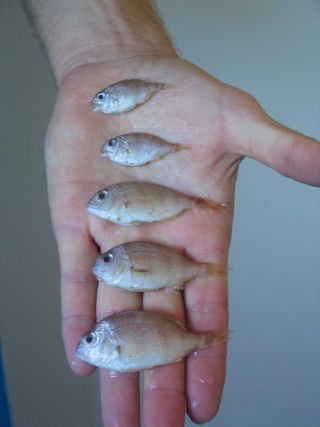Snapper in Port Phillip

Juvenile snapper have been swarming Port Phillip Bay in recent months; feeding aggressively and being found extensively. These young snapper, known as ‘pinkies’ are showing up in schools we have not experienced for many years and studies conducted by Fisheries Scientist Paul Haymer, may
just reveal why!

The Snapper; one of Victoria’s most sought-after and prized fish, found in most of our saltwater environments. Port Phillip Bay is a major nursery ground for this species and with the boom in juveniles we are seeing today, the fish are now overflowing into surrounding waters such as Westernport Bay. Annual surveys conducted by Victorian Fisheries provide key information into one of the indicators of the health and future of our Snapper fishery; that being the abundance of baby snapper. These trawls are led by Dr Paul Hamer, Victorian Fisheries Scientist and take place in nine locations across the bay from mid-March to April in approximately 7-24 metres of water (VRFish, 2018). Hamers research provides more than 20 years of Snapper fishery data and reveals important insights to help track the status and guide sustainable management.
It is well known that favourable environmental conditions increase the availability of local plankton and larvae species which combined with ideal temperatures support juvenile snapper. Hamer’s data suggest that on average, snapper have a good spawning season every 5-8 years and in 2018 Snapper stocks were the best recorded in approximately 27 years (VRFish, 2018). Juvenile Snapper take 3-4 years to reach the minimum legal length of 28cm and 6-7 years to reach 40cm, so we should see plenty of legal snapper in Port Phillip Bay by 2021-22 according to the data, great news for our
future Snapper Fishery.
Continued research efforts made by fisheries scientists help reveal future trends in our fisheries and provide insight into best fishing practices. When fishing for snapper; light high carbon circle hooks or lures are best practice to avoid deep hooking and fishing in water no deeper than 11m to avoid barotrauma. Once you’ve caught all the snapper you need effective catch and release practice includes minimal handling, quick release and avoid taking fish from the water when possible.
Stay safe on the water and until next time, tight lines!


